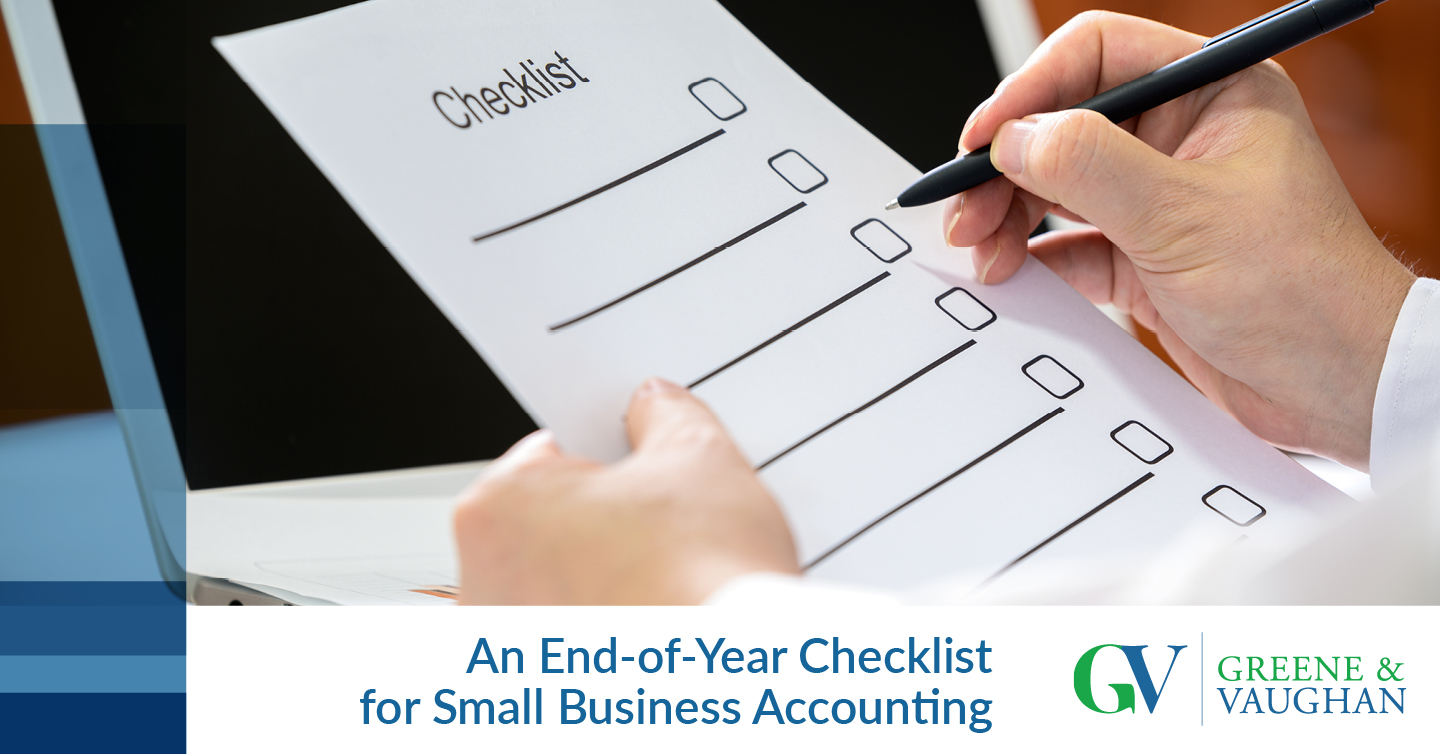Before we know it, another year will be behind us! But there is still time to get a grip on your business finances. In fact, we’re sharing an end-of-year checklist for small business accounting now to help you get organized!
Get your accounts in order.
How organized are your books? The first step is making sure your books are correct, current and ready to go. Additionally, it will help you see who may owe you money and vice versa.
Prepare key financial documents.
To clarify, a few key documents include a balance sheet report, an income statement report and a cash flow report. Together, these reports help you see where you are financially and where you have been.
Plus, these reports can be used to plan for a final push to reach your financial goals for the year, or a jump start for next year’s plan.
Analyze cash flow statements.
Included on our end-of-year checklist for small business accounting is taking a hard look at your business’s cash flow statements. This report shows how your money was spent throughout the year.
By thoroughly reviewing it, you can identify spending trends for the year.
Closely review and understand your finances.
The analyzing continues with the task of reconciling any card statements with your account records. Double check each item, line-by-line, to make sure the statements match your balance sheet.
Gather your tax documents.
Now is a good time to find all of your tax forms such as the 1099-NEC or Form 1096, and W-2 and W-3 forms. Be sure to include your annual or quarterly state and federal payroll returns as well.
Update employee and payroll information.
Now is a good time to conduct an end-of-the-year employee information audit. Connect with your employees and make sure their contact information and addresses are current.
Verify vendor information.
Do the same thing with your vendors and make sure all their information is up to date in your system.
Summary
Finally, contact us to schedule your free consultation! We would be happy to help with your small business accounting year-end needs as well as planning ahead for 2022. For more accounting insights, be sure to check out our other blogs.






Leave A Comment